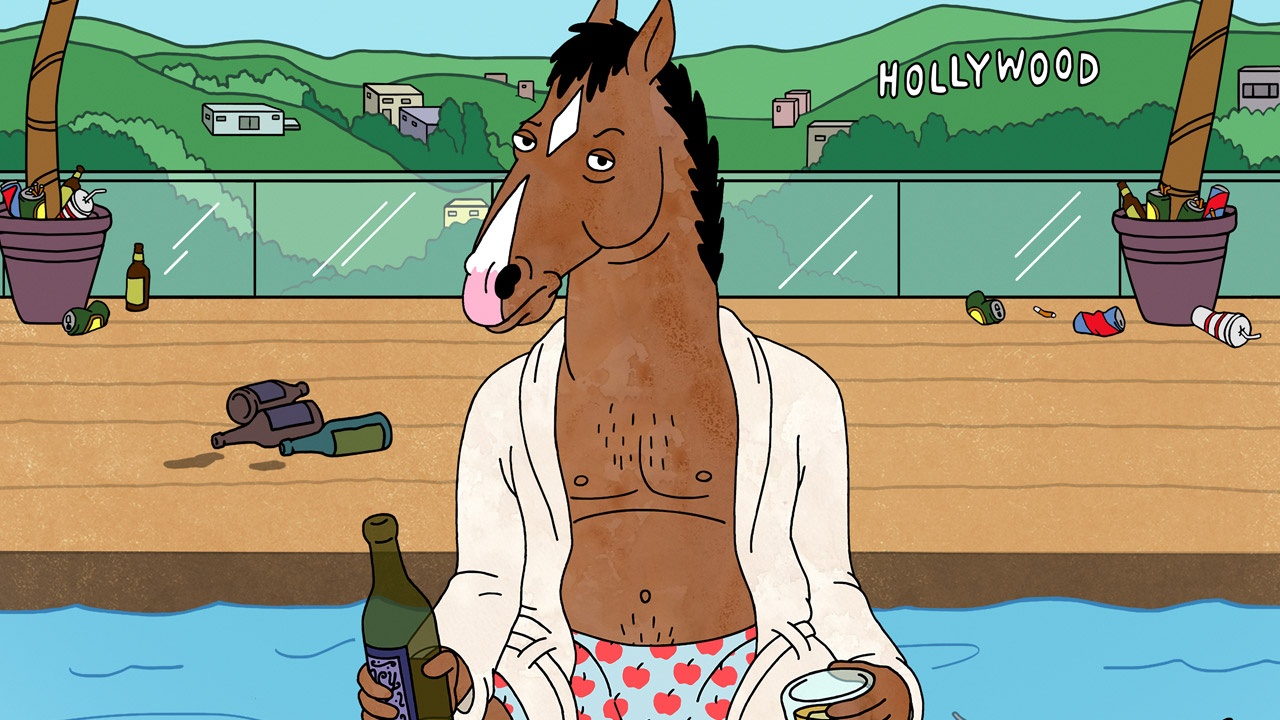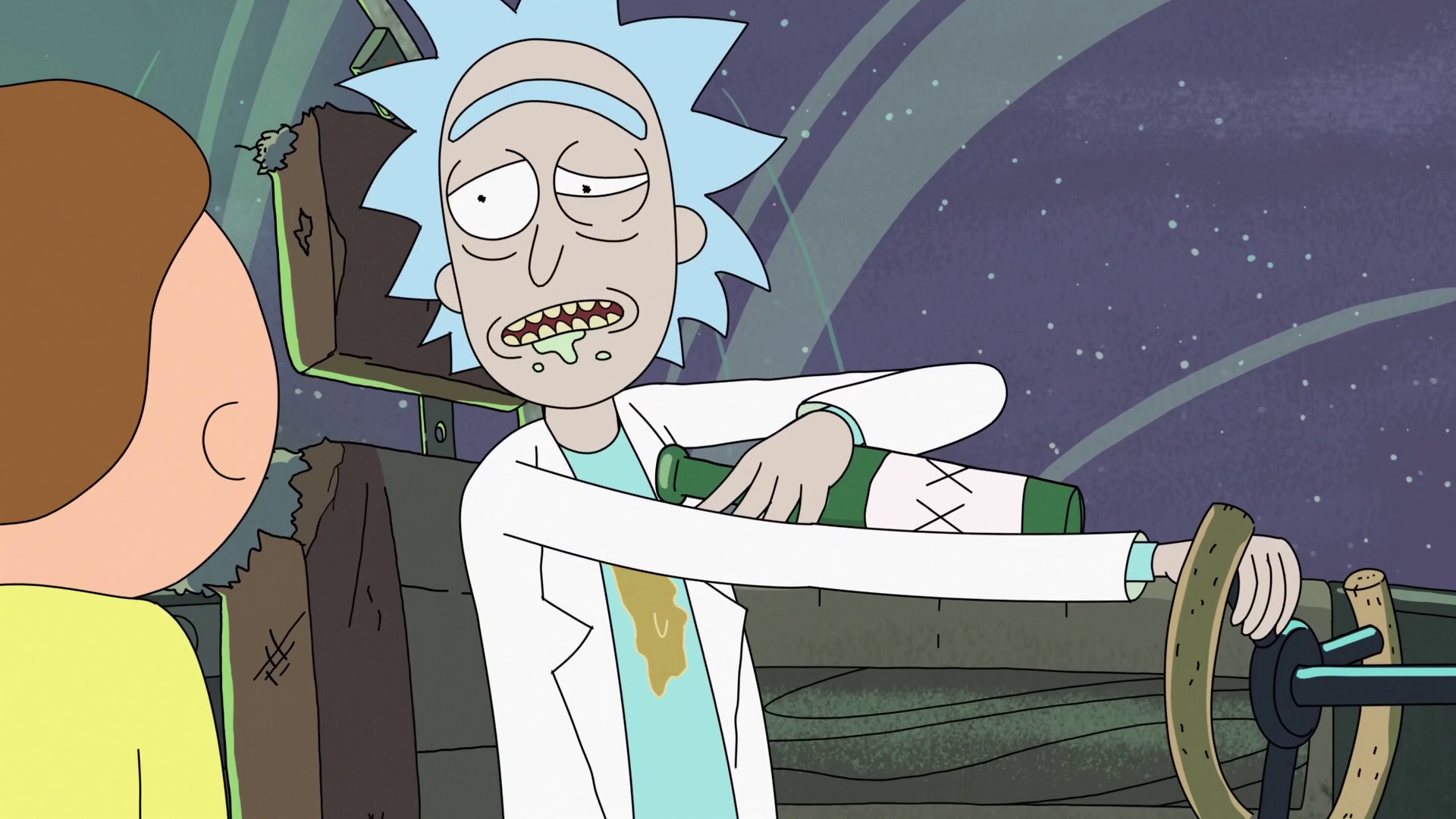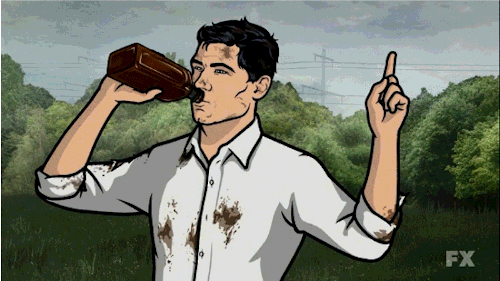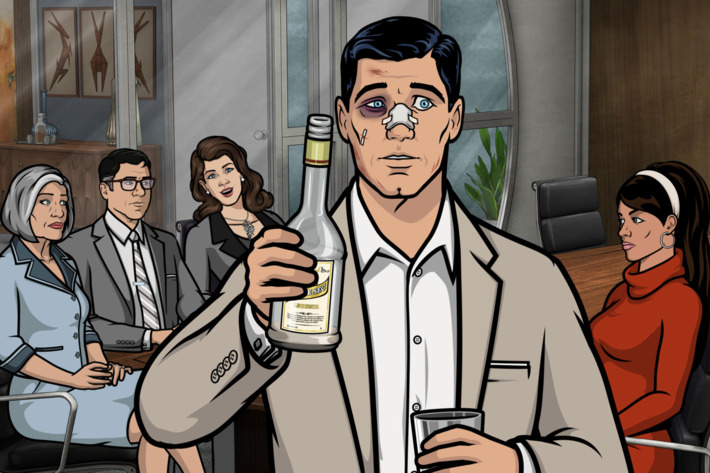The Peculiar Sadness of Animated Alcoholics
In a sadcom, you must suffer for your happy endings.

Screenshot: Netflix
In 2015, writer Jenny Jaffe coined the term “sadcom” to refer to an emerging genre of television show. Less dire than black comedies but far bleaker than the unmixed type, these shows—among them titles like “Unbreakable Kimmy Schmidt” and “Louie”—know that humor cuts deeper and hits harder when it’s undergirded by sadness. So they center on anti-heroes, men (they are nearly always men) who see the world for exactly what it is: fucked-up, out of our control, and ultimately pointless. The universe is a joke and our petty selves are the punchline. The best we can do is know that, and try to get some laughs out of it when and where we can.
Sadcoms are rarely cited in the emerging canon of the Golden Age of Television, but they share a certain aesthetic with modern hour-long prestige drama: a messy emotional realism that, when it tips too far, conflates smart with sad, and complicated with interesting. There’s a palpable disdain for sentiment, that old-fashioned notion that viewers might want to watch shows about people they can easily like, or relate to.
But where prestige drama is Serious Television for Serious Adults, sadcoms are Shows For Adults Who Like, Don’t Take Themselves That Seriously, God, which is perhaps why some of the most prominent shows in the genre are cartoons. The childishness of the medium lends the viewer a hip, self-aware distance from being perceived as self-serious while also making the content of the shows themselves seem all the more sharply transgressive. It’s refreshing to watch something that isn’t relentlessly sexy and stylish. It feels smart to engage with creators who are willing to experiment with forms that don’t “look smart,” and aren’t often taken seriously.
High-low may be a tired trope in fashion, but in media it still feels relatively radical. And sadcoms by definition draw their power from the friction of contrast: aside from being comedies about sad people, they are also by turns cynical and earnest, with the cynicism serving as something like an excuse for the earnestness: working to make it feel earned.
The sadcom, Jaffe writes, is ultimately “deeply optimistic,” but access to that optimism comes only when you’ve suffered for it. Hope isn’t valid unless it’s being espoused by someone who is keenly aware of the stupid, shitty, petty pointlessness of life. How do cartoon shows make sure we know they’re for grown ups? How do they signal to us that their anti-heroes are keenly aware of the stupid, shitty, petty pointlessness of life? Well, more often than not, they give him a drinking problem.
![]()
Sterling Archer from the FX show “Archer” would probably tell you that he drinks because it looks good on him: that a glass of bourbon is just as much a part of his spy uniform as the black turtlenecks he wears on undercover missions. (He would not mention his mother’s alcoholism, or the emotional abuse she inflicted on him throughout his childhood.)
Bojack of Netflix’s “Bojack Horsman” has no such illusions: he drinks because he’s a self-proclaimed stupid piece of shit, because he’s depressed, because things are bad now, but what if he stopped and they still didn’t improve? Better not to find out, better to be a self-defeating fuck up, better to stick with what you know and hope you stay toxic enough to keep anyone from getting close enough to see your hideous inadequacy, that it wasn’t ever the drinking, really: you were just unlovable all along.
(Also, his mother emotionally abused him as a child.)
It’s Rick Sanchez, of “Rick and Morty,” who drinks because he’s a genius. “”I’m not the nicest guy in the universe, because I’m the smartest. And being nice is something stupid people do to hedge their bets,” Rick declares in the final episode of season two. Intelligence is Rick’s excuse for pretty much everything: he’s seen too much and he knows too much. He can do too much, and no one can stop him, and he’s bored and miserable. So he drinks! Why wouldn’t he? What would be the goddamn point of not having a drinking problem.

Screenshot: Adult Swim
The show is just as exhaustingly smart as Rick is (and it’s very, very hard not to read Rick as a stand-in for one of his creators, Dan Harmon, who is famously a hard drinker, wildly intelligent, and extraordinarily difficult to work for and with) and so of course it can’t let those assertions pass without comment: “Rick, the only connection between your unquestionable intelligence and the sickness destroying your family is that everyone in your family, you included, use intelligence to justify sickness,” a therapist tells him deep into the third season.
She talks about the difference between Rick’s work as a scientist and creator, and the maintenance that things like therapy and recovery require: the willingness to do boring, unsexy tasks over and over and over again. It’s a (sorry) sobering moment. And it’s immediately undercut when, in the car after the session, Rick and his daughter, Beth, make plans to get drunk together while the children they were ostensibly at therapy to treat sit, wide-eyed and miserable, in the back seat. “I— I liked her,” one of Rick’s grandchildren, Morty, offers.
“So what are you thinking? Like, Smokey’s Tavern?” Rick asks Beth.
Cut to credits.
“Rick and Morty” pays lip service to the idea that intelligence, depression and addiction aren’t inextricably linked, but the unrelenting cruelty of the show itself suggests that it doesn’t particularly believe that message. Watching it can sometimes feel like a test of endurance: Harmon and his co-creator, Justin Roiland teaming up with their writers’ room to see just how far they can push their viewers.
So far, the consensus seems to be: give us all you’ve got, perhaps because same way that the self-flagellating cycle of alcoholism feels good because it feels bad—because it feels, to the alcoholic, like exactly what she deserves—we feel like the suffering of watching these shows is somehow noble, and pure.

Image: FX
Our willingness to believe that sadness in an intelligent affliction actually helps elide the fact that addiction is a perfect, classic sitcom trope: because addiction is a cycle, and the point of the sitcom is that nothing will ever change. The same cast of characters will have essentially the same conversations about different situations, perhaps in different settings. Archie Bunker will be racist; Rachel Green will want to go shopping; Rick Sanchez will be an asshole to his grandchildren and everyone else, too.
Sadcoms’ insistence on unsettling familiar narrative patterns—particularly “Rick and Morty” and “Archer”’s status as genre parodies, which makes dismantling tropes their job—feels like vital, interesting work. But watch too many episodes in a row and you realize that unsettling is interesting and useful, but it is also not all there is. These shows say a lot of negative things about how we and our stories and addictions function, but, because they’re also sitcoms, they do it over, and over, and over again. They are destructive, but not necessarily radical, in that they fail to imagine what might be built by the space they’ve cleared in that destruction.
It’s nice to be “deeply optimistic,” but optimism is an idea, and addiction is a practice, and these shows spend much more time on the mechanics of addiction than those of recovery and its attendant tender hopefulness. There’s value in that representation and its reality—most of us spend a lot of time in the mire of our fuck-ups before we start moving towards recovery, and even then, the path is rarely a straight one. But it can also make their gestures at optimism feel cheap, because we know that they’re never going to actually center themselves on what living fully in that optimism would look like.

Screenshot: FX
It’s also particularly troubling because the ways these shows handle sadness is so deeply gendered. “Archer,” “Bojack” and “Rick and Morty” are centered on men and their feelings—but they can only do this by making those feelings not only mostly negative, but also then serving as source of shame, misery and, ultimately, violence, whether externally focused or self-inflicted. It’s okay to be sensitive, but only if you’re damaged by previous pain (in both Archer and Bojack’s cases, inflicted by an unfeeling woman). It’s okay to be hurt, but only if you use that hurt to hurt yourself or someone else.
In all of these cases, alcoholism implies emotional pain, but also hides it. We are meant to understand that these characters drink because they’re unhappy, but the fact of their drinking takes center stage, and saves them from having to discuss or deal with the unhappiness that drives it. That’s the mechanism of drinking in real addicts’ lives, of course, or one of them, anyway, but in fiction it serves an additional cultural function by reinforcing the notion that men’s emotional lives can only ever be witnessed as a series of symptoms.
So we diagnose sadness without witnessing it. We see him take a sip and we know it means numb and why would he want numb if he wasn’t in pain. We see cruelty and assume that he’s only acting out cruelty that was visited on him. We learn to read the signs. It makes you wonder: where is the art that’s willing to drill down to the crude stuff, the awful dumb unspeakable territory of male feeling itself? Is there a way to speak about sadness, but also maintenance, and recovery, and hope, and work, without first surrounding them in darkness, and roughing them up with grit?
![]()
The marriage of sitcom sameness with cynical storytelling feels particularly apt for this specific cultural moment, in which depression is both increasingly visible as a debilitating mental illness and also circulated as a kind of relatability currency in the form of memes. Depression is often co-morbid with addiction, and viewers have made various psychiatric diagnoses of Archer, Bojack, and Rick.
Our sicknesses—including addiction—have started making space for themselves in the public sphere, but that doesn’t mean we know how to talk about them earnestly yet. Much like Archer, Bojack, and Rick, we recognize the value of sincerity but cringe when asked to engage in it ourselves. What even is sincerity? We start asking. Isn’t sincerity just as cheap an emotional ploy as cynicism, if the sincerity wasn’t smart to begin with? Being alive is messy, often unsatisfying. Aspirational art can be uplifting, but it can also be frustrating: that’s not how it works!!!!! We want to yell at the screen.
The danger in explicitly non-aspirational art is, ironically, exactly the same: the world is not always kind, but neither is it always as unrelentingly cruel as these shows sometimes suggest. Especially in a cultural moment that presents non-fictional news that defies the possibility of exaggeration or parody, it’s easy to start wondering: why am I putting myself through this?
But that question has value, too, as long as it resonates beyond the lives of the fictional alcoholics we watch on screen, and out into our own. Sometimes we need to bear witness to the stagnancy of addiction and depression cycled through at relatively high speed—23 minutes an episode, ten or fifteen episodes a year, or however many you binge on in bed with a hangover of your own—in order to see our own slower declines more clearly.
There’s value in witnessing your least attractive qualities, your scariest sicknesses, projected onto a culturally validated screen, but the point of representation is never the representation itself: it’s what we do with it once we have it. And cartoon alcoholics have a very difficult job put to them, because they aren’t meant to inspire us to be like them. They’re meant to mirror that we already are like these characters; the disgust they inspire is only useful if it moves to change ourselves, or at least, occasionally, the channel.
